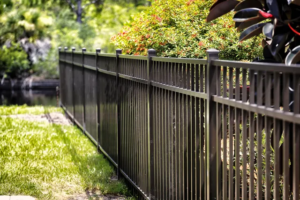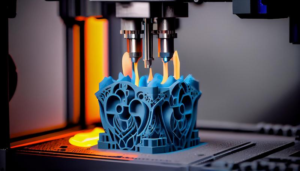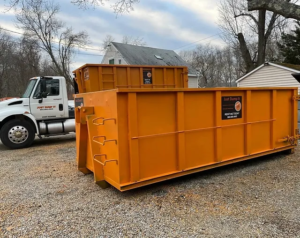Fences provide security, protect pets and children, and add curb appeal. Before beginning work on a new fence, homeowners should contact their municipality and check for local codes, restrictions, or permits.
Also, it’s a good idea to talk to neighbors about sharing the property line in advance. This will ensure the best results and prevent confusion or conflicts. Click Fence Installation Charlotte NC to learn more.

Whether they’re defining property lines or upgrading your curb appeal, fence posts support the rest of the structure and help your new fencing remain strong and sturdy for years to come. Choosing the right posts for your project is critical, as each type has its own set of advantages and limitations.
Wood fence posts are a traditional choice, offering both strength and visual appeal that works well with many types of fencing materials. However, they must be treated for durability against the elements and the effects of rot and other natural factors like freeze-thaw cycles and high winds. Fortunately, there are plenty of treatment options that can make them last a long time.
When installing a wooden fence post, it’s important to dig holes that are as deep as possible. This will prevent the posts from shifting later due to frost heaving and will also help the soil hold them more securely. A power auger or a post hole digger makes this process much easier. It’s a good idea to put some gravel in the bottom of each hole as well, which will reduce the amount of moisture at the base of the post and prevent it from rotting.
Once the holes are dug, a few stakes can be used to mark the location of each corner and gate post. This will give you a guideline to follow when setting the posts, which will ensure they’re arrow-straight once they’re in place.
Once the posts are firmly in place, pour concrete around them. Use a quick-setting mix like Quikrete for best results. Then, tamp the concrete to eliminate any air pockets and create a level surface.
Rails
A rail is a bar of steel fixed horizontally for use as a support, barrier or fence. It may be made of wood or metal and can be painted or stained in various colors to match the home’s exterior. It can also be used to hold window sashes or the panels of furniture like paneled doors and chests of drawers. In a railroad, it is a part of the track that supports other rail-wheeled vehicles.
The most common type of rail is continuous welded rail (CWR). It is hot rolled from blooms or rounds that have the appropriate cross-section for the rail profile and then rolled into its final shape. The CWR is then trimmed to length and fastened together with a joint bar, which is usually perforated to allow the passage of electric currents.
When properly maintained, a rail can serve for many years. However, rails are prone to deterioration over time due to their exposure to extreme temperatures. It is important to keep the rails clean and free of rust, corrosion and other contaminants. This will extend the life of the rail and help it perform at its best.
Globe Fence & Railings has been in business since 1957 and serves commercial and residential clients in New York City. The company provides wood, chain link and vinyl fencing services as well as arbors, gates and deck rails. Its services include repairing existing structures as well as customizing them to suit the customer’s needs.
All Island Fence & Railings caters to the security and beautification needs of homeowners in New York City. Its team designs and builds a variety of fencing styles and materials, including PVC vinyl and aluminum. They also offer chain-link, picket, ornamental iron, and estate fencing options. The firm uses products from brands such as SimTek, Bufftech, and Aruvil.
Planks
After the posts and rails are set, it’s time to add the fence slats. Depending on the type of wood (cedar, redwood, or pine), this step can significantly affect overall cost. Cedar and redwood are more expensive because they are naturally more durable, while pine is less expensive but must be treated to protect against rot, insects, and moisture.
Spacing wood slats correctly is crucial to creating a smooth, polished look for your fence. Leaving too much space between the boards results in gaps, and too little can create a sagging appearance and pose safety concerns for pets and children. To ensure uniform spacing, it’s helpful to use a piece of scrap wood as a spacer while installing the boards.
Dealing with Slopes and Uneven Ground
If your yard has a significant grade, it’s necessary to stagger the panel heights where they fasten to the posts. Otherwise, you may leave gaps through which family dogs can escape or unwanted critters can enter your property.
Preparing for Fence Installation
Before starting the project, it’s important to contact local utility companies to have underground lines marked. This prevents damage to water, gas, or electrical lines during construction.
Obtaining the Proper Tools
In addition to fencing materials, you’ll need the proper tools for digging post holes and ensuring the posts and rails are level. A manual post hole digger works well for smaller projects, while a power auger is ideal for larger installations and tough soil conditions. You’ll also need a wheelbarrow for transporting dirt, concrete, and other materials. Other essential equipment includes a pair of gloves, safety glasses, and ear protection if working with loud power tools.
Concrete
Concrete is one of the most versatile and durable construction materials available. It is used for a wide variety of building projects because it is affordable and can be molded to fit into nearly any shape or size. It is often reinforced with steel to increase its tensile strength and durability. Concrete is also resistant to fire, water, and pests, which makes it ideal for outdoor use.
Concrete is made from a combination of coarse and fine aggregate bonded together with fluid cement to create a strong and solid material. Cement is the most common binding material, but lime and other chemical compounds may be used. The cement forms a paste that coats the coarse and fine aggregates, which then harden to form a stone-like substance. Aggregates are usually sand or gravel, but recycled aggregates and other manufactured products may be substituted for some of the natural aggregates in concrete mixes.
The concrete mix must be carefully prepared to ensure consistency and the proper curing process. The aggregates must be thoroughly screened to remove all debris and large pieces that could cause problems during the concrete installation process. It is also important to ensure the correct amount of water is added to the concrete mix. If the water is too much or too little, the resulting concrete will not be as strong and may not cure properly.
Once the concrete is ready, it can be transported to where it will be installed using a number of different methods depending on the quantity needed and other details of the project. It can be poured from a truck, pumped from a truck mounted mixer, or carried in containers for manual placement. For small projects like setting fence posts or mailbox posts, QUIKRETE(r) Fast-Setting Concrete can save time and effort by eliminating the need for mixing, tools and multiple trips to the concrete supply yard.
Finishing
Once the posts have been set and the concrete has cured, your fence begins to take shape. Next, the rails are affixed to the posts and the panels or pickets are attached to the rails. Precision is crucial during this phase to maintain the integrity and appearance of your new fence.
Ensure all materials and tools are at hand before beginning the installation process. This helps prevent delays caused by running out of necessary supplies. Also, by prepping the materials beforehand, it can help reduce installation time. Having all the proper tools for the job will help you achieve precise cuts and measurements, resulting in a stronger, more durable fence. Some essential tools include a post hole digger, circular saw, tape measure, level, power auger, and drill.
Prior to digging post holes, it’s important to call 811 to have all underground utility lines marked. This step will protect against damage to water, gas, or electrical lines during the fence installation process. Once all the post holes have been dug, the next step is to prepare them for the fence panels or slats. This involves using a power auger to dig the holes to a depth of one-third of the height of the post above ground, plus 6 inches for drainage gravel.
After the slats have been installed, they must be secured to the rails with galvanized screws or nails. For a clean appearance, it’s recommended to countersink the fasteners slightly below the wood surface. Lastly, a stain or sealant is applied to the fence for protection and beauty.
To enhance your fence’s aesthetic, consider planting shrubs, flowers, or vines along the line. This will not only soften the look, but it will integrate the fence into your landscape and add to the overall curb appeal of your home. In addition, it’s important to keep up with regular maintenance of your fence to avoid further deterioration and damage. Cleaning the fence annually with a pressure washer and mild detergent can prevent fungus and mold growth, while applying a stain or sealant every few years will help protect against moisture absorption.



